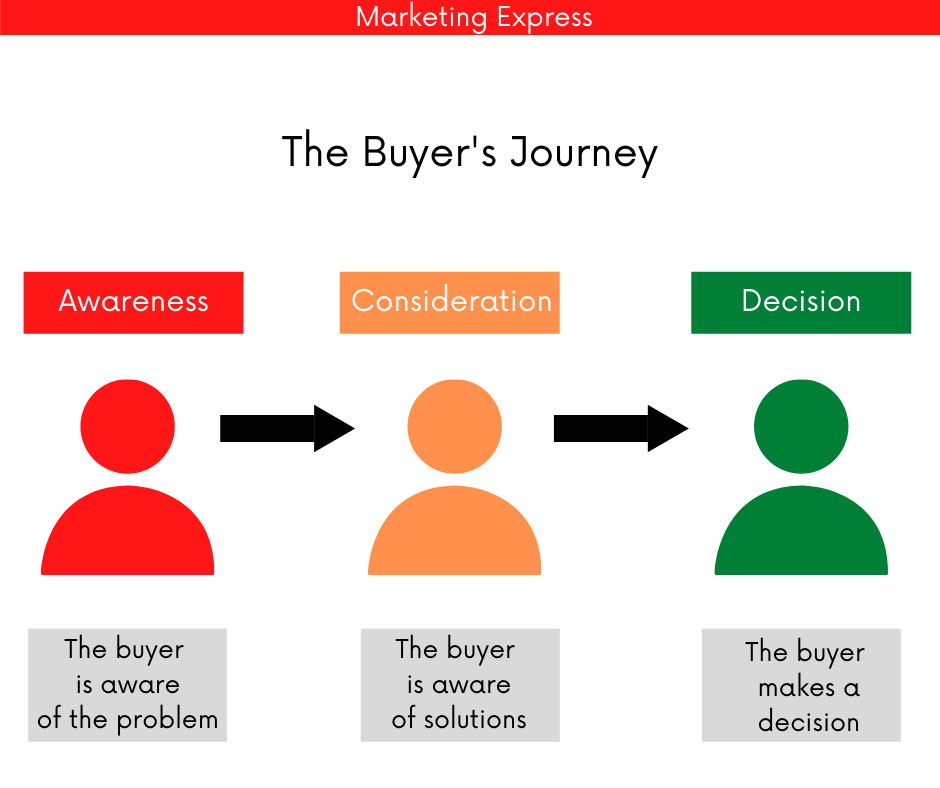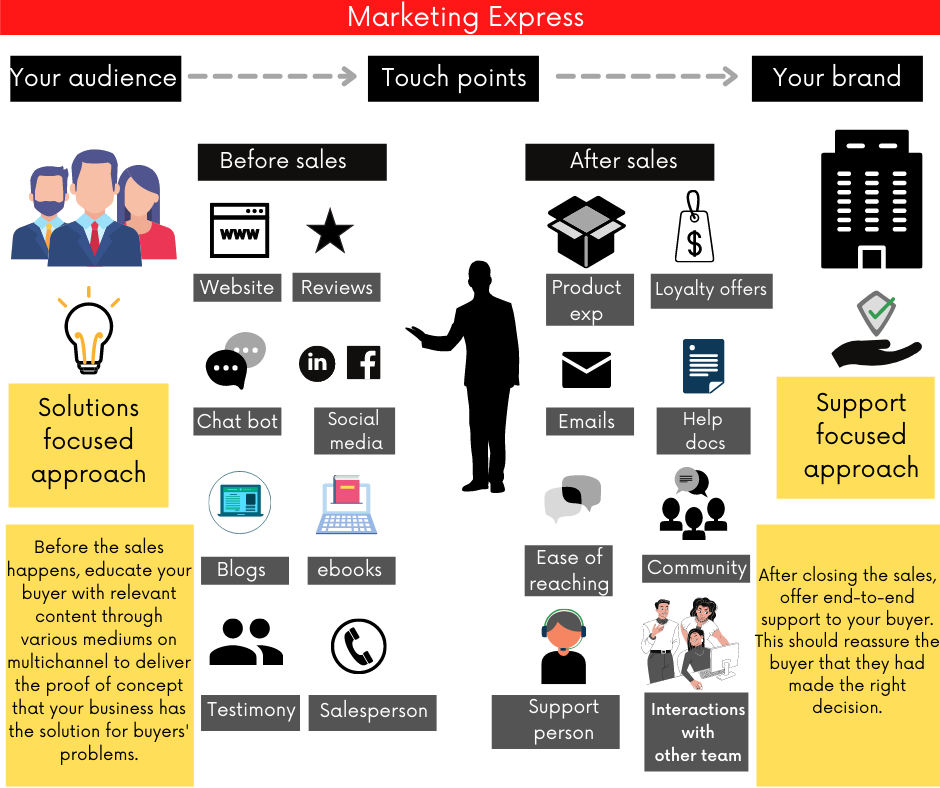- HOME
- Digital Marketing
- Customer Touchpoints
Customer Touchpoints
- Last Updated : September 8, 2025
- 1.4K Views
- 7 Min Read

Customer touchpoints are the point of interaction between a buyer and the business that enable buyers to understand the business better and make a purchasing decision. It encompasses both digital and in-person media.
Some examples of customer touchpoints include the company's website, blog page, live chat, social media, sales calls, ads, physical shops, and even the customers' experience with other stakeholders in the business.
Earlier, a buyer just wanted one or two interactions with the business to make a purchasing decision. But the rapid growth of online content and more options to choose from have raised the customers' expectations.
Modern buyers may need to interact with the business at least seven times before making a purchasing decision. This has raised the need for businesses to create multiple touchpoints. Omnichannel marketing tools allow businesses to deliver consistent experiences across every interaction point.
The real challenge today is not about creating multiple touchpoints but providing a consistent brand experience across all the channels. In this article, we'll discuss different touchpoints, as well as one simple yet effective way to provide a consistent brand experience.
Connection between buyers journey & touchpoints
The buyers' journey is a process where individuals become aware of, consider, and evaluate the problem before deciding to purchase products/services/solutions. The three stages of the buyers' journey are awareness, consideration, and decision.
In this journey, buyers usually interact with different touchpoints based on their position in the funnel, and keep progressing once they are equipped with sufficient information to take the next step.
For example, a buyer who is recently aware of the problem may check the website/social media/blog page (awareness stage touchpoints) of the business that offers solutions to the buyers' problem.
If the buyer has accumulated sufficient information and gained confidence in the brand, they will interact with consideration stage touchpoints: talk to sales, request a quote, understand pricing, and do more to make a purchasing decision.
In the real world, the buyer may evaluate multiple brands simultaneously, and choose the brand that provides a better experience than others. The main components for delivering a better experience are personalized solutions, relevant content, friendly sales team, faster website, and consistent brand experience.
This means brands have to design each touchpoint with a goal of satisfying buyers in all the stages.

Touchpoints can be grouped into two categories: before sales and after sale
Touchpoints - before and after sales
Touchpoints before the sales should deliver solutions to the buyer's problem, and touchpoints after closing the deal should deliver support to buyers in implementing the purchased solution to solve their problem. Tools for marketing automation can help streamline pre-sale touchpoints and ensure timely follow-ups.
Some touchpoints before the sales
Awareness-marketing touchpoints
1) Website: The website is the most critical touchpoint, as buyers start their shopping journey by interacting with the website. Regular website performance optimization ensures faster load times and a smooth browsing experience that keeps prospects engaged. Your website is the first impression for your visitors, and hence it should be the best experience. Most buyers look for solutions by entering the problem as a query on search engines and landing on the website that ranks on the first or second position of the search engine results page.
Buyers in the awareness stage may not be aware of your brand, so reaching your website through your brand name wouldn't be common at this stage. Optimizing your website for better SEO score would be a one-stop solution to garner more visitors and propel them to the next stage.
2) Live chat: Live chat has become an important touchpoint in recent times, as it is the best way to interact with your potential customers at the right moment when they are in the initial stage of their buying journey. This gives an edge to your brand, as you can understand the buyers' problem in the first place, and pitch your solution before they go and explore other options. If your solution entices them, you could win a deal almost instantly.
3) Blog page: Blogs are informative touchpoints for buyers who are encountering your brand for the first time. Content pieces like thought leadership articles, blog posts, and infographics can entice the readers to share their email address for receiving valuable information in their inbox, and brands can utilize this opportunity to nurture the signed up readers through emails and convert them into customers.
4) Social media: Social media has become the most preferred touchpoint for modern buyers. Online platforms like Quora, Reddit, Facebook, Twitter, and Instagram are great places to find information, discuss with other online members, and solve problems.Moreover, customers today want brands to be active on all the social channels and expect brands to respond to all the queries and resolve the problems instantly in the buying process.
5) Testimonials: Testimonials are powerful touchpoints, as they are social proof that the product or service offered by your business is working well for others, and assures the new customer about your solution. This makes buyers feel confident about your brand and enables them to make a purchasing decision.
Consideration - marketing touchpoints
1) Ebooks, White papers, Case studies: At this stage, buyers should be well aware of their problems and be ready to evaluate different vendors and solutions to find the best possibilities. Solution-focused content pieces like ebooks, white papers, and case studies can be the proof of concept to convey the buyer that your solution is more effective than other providers.
2) Email: Email is the primary channel to manage communication between the business and customers/prospects. Potential buyers would have already signed up for email communications if the brand has enticed the buyer through informative content pieces like blogs or white papers.Personalizing email content based on the buyers' journey like demographics, past purchases, and online behavior can make buyers feel that the business is offering a relevant solution for the buyers' problem.This makes the buyer consider and keep your brand at the top of the list over your competitors.
3) Product demos:This could be the final touchpoint in the consideration stage. If the buyer has booked and showed up for a product demo session, they are most likely to purchase the solution if everything fits the buyers' needs.If the buyer attends the demo session and does not make a purchase, the sales team should follow up and find out the reasons for not taking action.
If the buyer is not confident about the product's capabilities, offering a free trial can help the buyer to make a decision. Free trials may not be applicable for all the products. If that is the case, the sales team should find out all the buyers' questions and objections and address them with content like testimonials, user reviews, case studies, and other proof of work to earn buyers' trust.
Decision - marketing touchpoints
1) Phone calls (Sales, Support, and for every other team): Phone calls are critical touchpoints as they involve one-to-one interaction and give a more personal experience to buyers. Buyers at this stage would talk to a salesperson, understand the product/services delivery, and discuss pricing, offers, and discounts.
Businesses usually train sales and support staff to cpnverse well on phone calls, but should also extend the training to other teams like finance, product implementation, and any team that may come in contact with customers. Every interaction with customers is a touchpoint and bad interactions can leave a negative impression and have an adverse effect on the business.
2) Checkout pages: If your business is e-commerce or sells products where customers can make a purchase themselves then the checkout page is the ultimate touchpoint.The checkout page should be simple, secured, and have an easy call-to-action, so that buyers can finish their long journey without any hassle.Collect the buyers' details before they move to the final page so that you can follow up and nurture them on email even if they didn't complete the purchase.
Some touchpoints after the sales
1) Product/Service Experience: Your product or service is perhaps the most powerful touchpoint that leaves a long-lasting impression on the buyer. If your delivery leaves a positive impact on your buyers, then they may turn into your brand advocates and bring you more customers. Referrals should be the ultimate goal of product-led marketing.
2) Training and community: The important goal of touchpoints after the sales should be offering support to your buyer. Offering training programs like webinars, courses, and events on utilizing the solution would help buyers to resolve their challenges and achieve their goals faster. Likewise, creating a community for your customers would lead to like-minded peer discussion, and customers would benefit from collective knowledge and experience and troubleshoot the problem by themselves without depending on the support team.
3) Customer support channels: Customer support channels are the medium for customers to connect with the business if they encounter any issues with products or services. The support channels include email, phone calls, chat, social media, and more. The support team should be omnipresent and easy to reach, and offer a seamless ticketing experience to customers.

Providing a consistent brand experience
Touchpoints keep evolving—what works well today may not give the same result tomorrow. However, understanding the buyers' problems at every stage and solving them will always provide a pleasant and constant brand experience to customers irrespective of touchpoints.One simple yet powerful way to deliver a consistent brand experience is managing all your prospects, customers, and marketing activities in one place.
Keeping your prospects, customers, and marketing activities in one place give you and your team high visibility and transparency on what's going on and what's working well for you.
This technically means every right stakeholder in your team is equipped with buyers details, including problems, experience with your brand, buying stage, and touch points that are working. This enables your team members to create and deliver a personalized experience to each buyer without having to start everything from first.
Unified marketing platforms like Zoho Marketing Plus let you manage all your audience, team, and marketing activities in one place.
Zoho Marketing Plus includes tools to manage contacts, create emails, monitor social media, track and analyze buyers' interactions, automate marketing content, and more to manage all your marketing from one place.This simply means your brand can provide a better and more consistent experience to customers, and keep delighting them at every stage.
 Bala
BalaBala is a product Marketer for Zoho Marketing Plus. He is passionate about discussing MarTech, Customer Experience, Omnichannel Marketing, and Marketing Analytics.
You can start a conversation with Bala by leaving a comment on any of his blog posts.Bonus information - Bala likes cats, coffee, and G-shock watches :)



Comments(2)
Love this blog! Well articulated. Solutionfocused before buying and support focused after selling are nice lines. Should be added as a tenet for sales & marketing. Can you share a video or a blog how zoho product helps SM people to provide good exp?
Thank you, Patrica. Your comment made our day :) If you are looking solutions for social media management, I'd recommend checking https://www.zoho.com/social/journal/ They have some amazing tips for social media marketers. If you want the Marketing Plus demo/article pls let me know. I can share one with you.